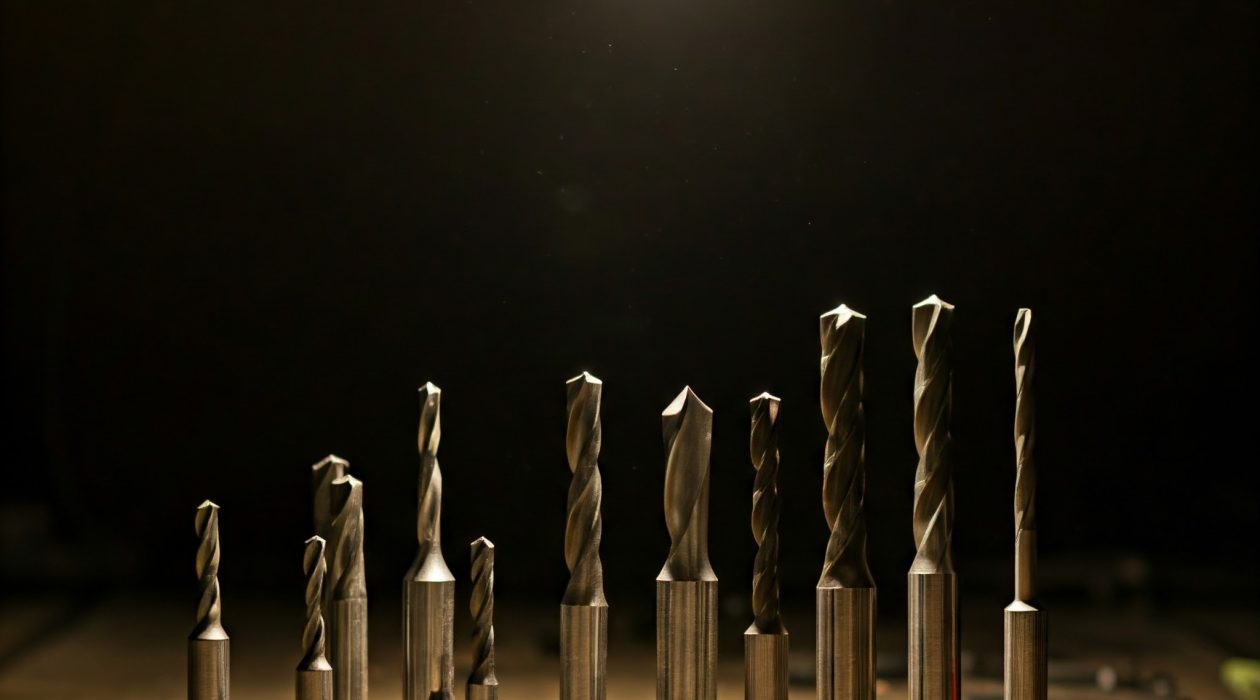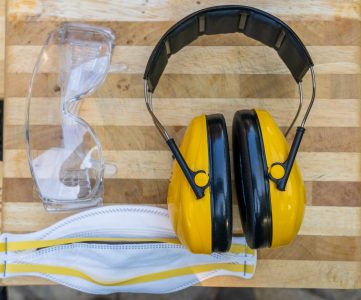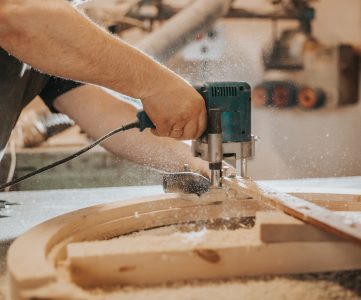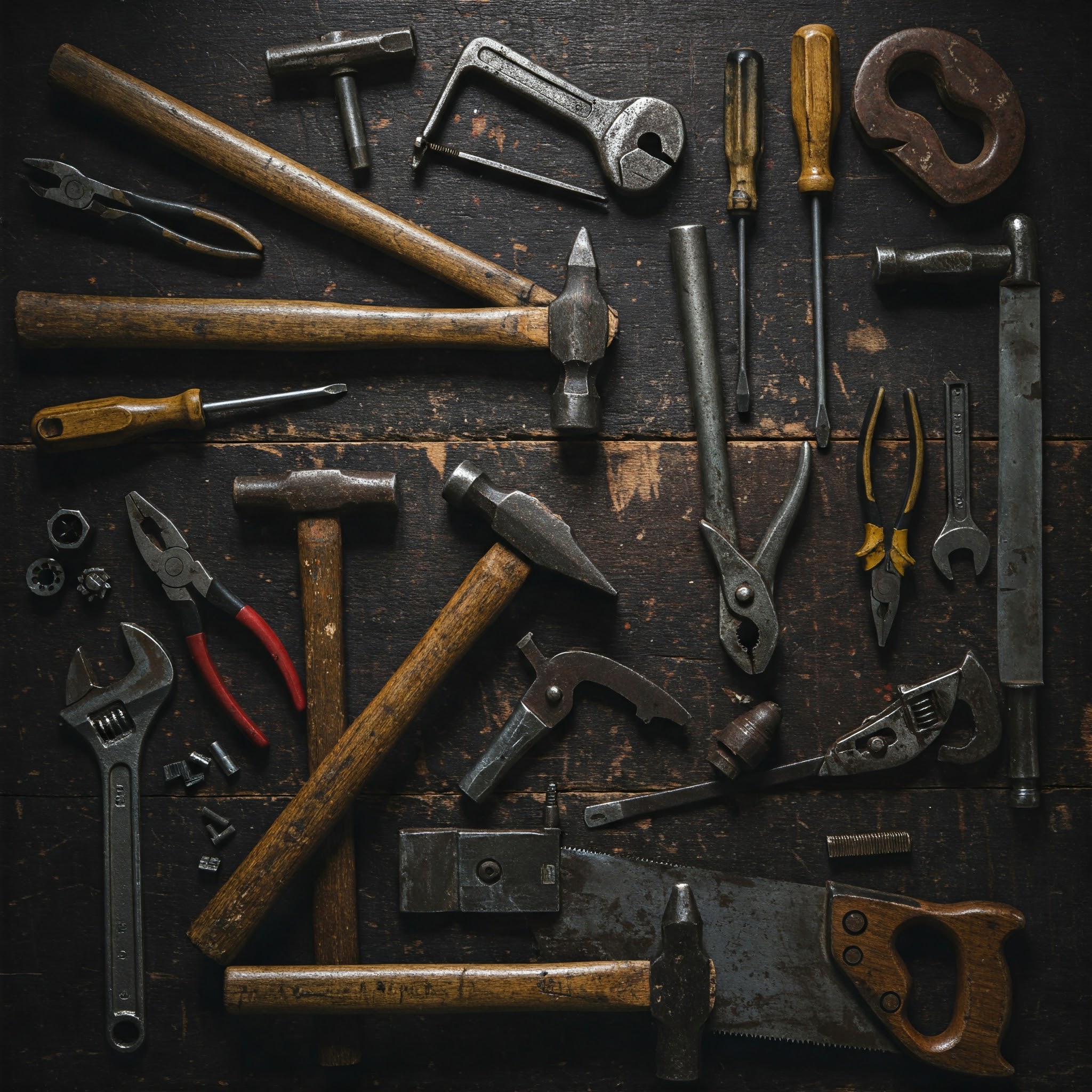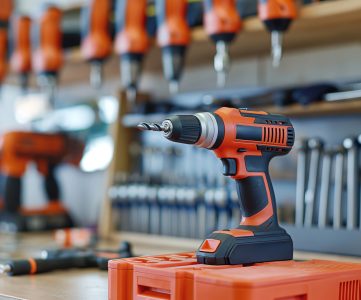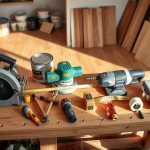Proper tool maintenance is key to extending your power tool accessories’ lifespan. By adopting effective tool care tips, you can cut costs, boost efficiency, and enhance performance. Whether you’re a DIY enthusiast or a professional contractor, caring for your power tool accessories is vital. It ensures you get the most from your investment.
Regular maintenance prevents damage and reduces replacement needs. By integrating tool care tips into your routine, your power tool accessories will last longer and perform better. Effective maintenance combines cleaning, storage, and usage techniques. These methods help extend your power tool accessories’ life.
By focusing on tool maintenance and following effective care tips, you can maximize your power tool accessories’ performance and lifespan. This approach saves time and money in the long run. It also ensures your tools function optimally.
Introduction to Tool Maintenance
Tool maintenance is a critical aspect of power tool ownership. Understanding the importance of tool care and applying effective maintenance techniques extends your power tool accessories’ life. This way, you get the most out of your investment.
Key Takeaways
- Regular tool maintenance can help extend the life of your power tool accessories
- Effective tool care tips can reduce costs and improve efficiency
- Proper storage and cleaning techniques are essential for tool maintenance
- Regular maintenance can help prevent damage and reduce the need for frequent replacements
- Following tool care tips can maximize the performance and lifespan of your power tool accessories
Understanding Your Power Tool Accessories
DIY tool maintenance hinges on understanding your power tool accessories. The right accessories can elevate a project, while the wrong ones can hinder it. Each piece, from drill bits to saw blades, is crafted for specific tools and materials.
Material quality is paramount when choosing accessories. High-quality materials significantly impact performance and longevity. For instance, titanium-coated drill bits outlast standard steel bits due to their durability and resistance to wear.
Types of Power Tool Accessories
- Drill bits and drivers
- Saw blades and cutting wheels
- Sandpaper and grinding wheels
- Router bits and jigsaw blades
Regular maintenance is key to extending your accessories’ lifespan. Proper cleaning, storage, and wear checks are crucial. By understanding and caring for your accessories, you ensure they perform optimally and last longer.
Common Materials and Construction
Accessories are crafted from various materials, including steel, titanium, and diamond-coated surfaces. Material choice depends on the task’s demands and required durability. For instance, diamond-coated saw blades excel at cutting through hard materials like concrete and brick.
The Importance of Regular Tool Maintenance
Regular tool maintenance is vital for extending your power tool accessories’ lifespan. By focusing on maintenance, you can cut down on downtime, enhance performance, and keep your tools running smoothly. This leads to power tool longevity, saving you money and avoiding headaches in the long haul.
Regular maintenance offers several advantages:
- Less chance of tool failure
- Better tool performance and efficiency
- Longer tool life
- Cost savings from fewer repairs and replacements
To keep your power tools in top shape, understanding the importance of regular cleaning, storage, and inspection is key. This prevents damage, minimizes wear and tear, and keeps your tools in excellent condition. Adopting a proactive tool maintenance approach will help you maximize the value of your power tool accessories and extend their power tool longevity.
By making maintenance a regular part of your routine, you’ll enjoy the perks of dependable, high-functioning power tools and accessories. Remember, a well-maintained tool is a significant investment that will last for many years. Proper tool maintenance is essential for achieving the best power tool longevity.
| Tool Maintenance Tips | Benefits |
|---|---|
| Regular cleaning and inspection | Prevents damage, reduces wear and tear |
| Proper storage and handling | Extends tool life, reduces risk of damage |
| Scheduled maintenance and repair | Optimizes tool performance, reduces downtime |
Essential Cleaning Techniques for Different Accessories
Proper cleaning is key to tool care tips and DIY tool maintenance. It extends your power tool accessories’ lifespan and ensures they work well. To clean them right, you must know the various cleaning solutions and materials out there.
There are many cleaning options, like soap and water, specialized products, and homemade mixes like baking soda and vinegar. The right choice depends on the accessory type and dirt level. For instance, a soft brush and mild soap are good for delicate items. But, for heavily soiled ones, a stronger cleaner is needed.
Cleaning Solutions and Materials
- Mild soap and water
- Specialized cleaning products
- Homemade solutions like baking soda and vinegar
Regular cleaning stops dirt and grime buildup. How often you clean depends on usage. Generally, clean after each use to avoid damage and keep performance up.
Frequency of Cleaning
Keeping your power tool accessories clean is vital for DIY tool maintenance. A consistent cleaning routine and the right solutions and materials extend their life. This ensures they keep working efficiently.
| Accessory Type | Cleaning Frequency |
|---|---|
| Delicate accessories | After each use |
| Heavily soiled accessories | After each use, with a deep clean every week |
Proper Storage Solutions to Prevent Damage
Extending the power tool longevity hinges on proper storage. This is where tool maintenance becomes critical. Correct storage of your power tool accessories prevents damage and extends their life. Here are some essential tips to begin:
Investing in a sturdy case or bag for storage is wise. It shields your accessories from dust, moisture, and environmental damage. For smaller items like drill bits and screws, use containers or boxes.
When storing your power tool accessories, remember these key points:
- Keep them clean and dry to prevent rust and corrosion
- Store them in a cool, dry place away from direct sunlight
- Use dividers or compartments to separate and organize your accessories
Adhering to these guidelines can significantly extend your power tool accessories’ lifespan. Proper storage is a vital aspect of tool maintenance. It ensures your tools function optimally. A well-maintained tool is a tool that will last. With the right storage, your power tool accessories will remain in excellent condition for years.
Sharpening and Reconditioning Methods
Regular DIY tool maintenance is key to prolonging your power tool accessories’ life. Sharpening and reconditioning are vital aspects of tool care. Sharpening boosts performance and prevents damage. You can sharpen tools manually or opt for professional services.
Manual sharpening works for simple tools but may not be ideal for complex ones. It’s crucial to follow proper sharpening procedures to avoid tool damage. Professional services, on the other hand, offer top-notch sharpening and reconditioning. They can restore your tools to their prime, ensuring they work optimally and last longer.
When choosing between sharpening and replacing tools, weigh the costs and benefits. Sometimes, replacing a tool is more cost-effective than sharpening it. Consider these factors:
- Tool condition: Severely damaged tools might be better replaced.
- Sharpening cost: If sharpening costs approach new tool prices, replacement might be wiser.
- Tool performance: If sharpening doesn’t improve performance, it’s time for a new tool.
| Tool Type | Sharpening Method | Cost |
|---|---|---|
| Hand saw | Manual sharpening | $10-$20 |
| Circular saw blade | Professional sharpening | $20-$50 |
| Drill bit | Replacement | $5-$10 |
By adhering to DIY tool maintenance and care tips, you can prolong your power tool accessories’ life. Remember to evaluate the cost and effectiveness of sharpening versus replacing tools to make informed choices.
Protection Against Rust and Corrosion
To ensure power tool longevity, protecting your tools against rust and corrosion is crucial. Regular tool maintenance can help prevent damage and extend the life of your power tool accessories. By taking preventive measures, you can save time and money in the long run.
Preventive measures include applying coatings, using lubricants, and storing tools in a dry environment. These simple steps can help prevent rust and corrosion from forming on your tools. Regular cleaning and inspection can also help identify potential issues before they become major problems.
Preventive Measures
- Apply a rust-inhibiting coating to your tools
- Use lubricants to reduce friction and prevent corrosion
- Store tools in a dry, well-ventilated area
By following these tips, you can help protect your power tool accessories against rust and corrosion. This ensures they continue to function properly and last for a long time. Proper tool maintenance is essential for power tool longevity. By taking the right steps, you can keep your tools in good condition and maintain their performance.
Rust Removal Techniques
If rust or corrosion does occur, there are several removal techniques you can try. These include using a wire brush to scrub away rust, applying a rust-removing solution, and using a sanding block to smooth out the surface. By removing rust and corrosion, you can help restore your tools to their original condition and prevent further damage.
Maximizing Performance Through Proper Usage
To maximize your power tool accessories’ performance, proper usage is key. It involves following the manufacturer’s guidelines and understanding each tool’s functionality. This approach ensures your tools operate efficiently and effectively, potentially extending their lifespan. Proper usage is a fundamental aspect of tool care tips and DIY tool maintenance.
Here are some tips to enhance performance:
- Use the correct tool for the task at hand.
- Adhere to the recommended speed and pressure settings.
- Regularly maintain and clean the tool.
By adhering to these guidelines, your power tool accessories will function optimally. This can significantly streamline your project completion process.
Proper usage also prevents tool damage, saving you money over time. By dedicating time to learn correct usage and following manufacturer’s instructions, you extend your tools’ lifespan. This maximizes your investment in DIY tool maintenance and tool care tips.
Common Mistakes That Shorten Tool Life
Power tool longevity heavily relies on proper maintenance and care. It’s crucial to avoid common mistakes that can shorten your tools’ lifespan. Understanding these errors helps you prevent them, ensuring your tools last longer.
Improper storage is a major mistake that affects tool longevity. Tools exposed to moisture, dust, and extreme temperatures can suffer damage. Regular tool maintenance is key to preventing such damage and keeping your tools in top condition.
Impact of Improper Storage
- Exposure to moisture can cause rust and corrosion
- Dust and debris can clog tools and reduce their efficiency
- Extreme temperatures can damage tool materials and affect their performance
Another critical aspect is avoiding usage errors. Incorrect use or excessive pressure can wear down tools, shortening their lifespan. Adhering to the manufacturer’s guidelines and using tools as intended helps prevent damage and extends their life.
Usage Errors to Avoid
Environmental factors like humidity, temperature, and chemical exposure also impact tool life. Storing tools in a dry, cool environment and protecting them from chemicals can help extend their lifespan. This ensures they continue to function optimally.
| Environmental Factor | Impact on Tool Life |
|---|---|
| Humidity | Can cause rust and corrosion |
| Temperature | Can damage tool materials and affect performance |
| Chemicals | Can cause damage and reduce tool lifespan |
By steering clear of these common mistakes and adhering to proper maintenance, you can extend your power tool accessories’ lifespan. Regular maintenance is vital for tool longevity. By prioritizing it, you can maximize your tools’ performance and achieve better results.
When to Replace Worn Accessories
Regular DIY tool maintenance is key to prolonging your power tool accessories’ life. Over time, these accessories can wear out, affecting their performance and potentially harming your tools. Knowing when to replace them is crucial for maintaining optimal function.
Inspecting your accessories regularly for wear and tear is a fundamental tool care tip. Look for cracks, dents, or excessive rust. If you spot any damage, it’s time for a replacement. Frequent use of your power tools also warrants regular accessory replacement as part of your DIY tool maintenance routine.
Signs that indicate it’s time to replace worn accessories include:
- Reduced performance or efficiency
- Increased vibration or noise
- Visible damage or wear
Replacing worn accessories ensures your power tools operate at their best. This reduces the risk of damage or injury. Always adhere to proper tool care tips and DIY tool maintenance practices to extend your accessories’ lifespan.
Conclusion: Building a Lifetime of Tool Care Habits
In this detailed guide, we’ve covered the crucial steps for maintaining and extending the life of your power tool accessories. We’ve delved into the different types of accessories and how to clean, store, and sharpen them properly. Now, you’re equipped with the knowledge to maintain your tools at their best.
For your power tools to last, make tool maintenance a consistent practice. By integrating these best practices into your daily routine, your accessories will remain reliable for many years. A well-maintained tool is not just efficient but also cost-effective, offering a long-term service that saves you money and time.
Adopt these proven methods and make tool maintenance a regular part of your workshop routine. With dedication and the right approach, you can establish lasting power tool care habits. These habits will ensure your projects are completed efficiently and your tools operate at their highest capacity.
